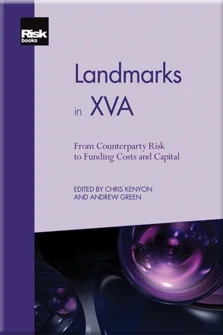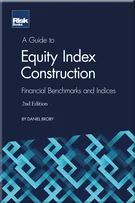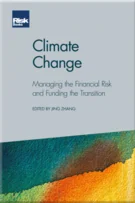Pricing CDSs’ Capital Relief
Pricing CDSs’ Capital Relief
Introduction
Preface to Chapter 1
Being Two-Faced over Counterparty Credit Risk
Risky Funding: A Unified Framework for Counterparty and Liquidity Charges
DVA for Assets
Pricing CDSs’ Capital Relief
The FVA Debate
The FVA Debate: Reloaded
Regulatory Costs Break Risk Neutrality
Risk Neutrality Stays
Regulatory Costs Remain
Funding beyond Discounting: Collateral Agreements and Derivatives Pricing
Cooking with Collateral
Options for Collateral Options
Partial Differential Equation Representations of Derivatives with Bilateral Counterparty Risk and Funding Costs
In the Balance
Funding Strategies, Funding Costs
The Funding Invariance Principle
Regulatory-Optimal Funding
Close-Out Convention Tensions
Funding, Collateral and Hedging: Arbitrage-Free Pricing with Credit, Collateral and Funding Costs
Bilateral Counterparty Risk with Application to Credit Default Swaps
KVA: Capital Valuation Adjustment by Replication
From FVA to KVA: Including Cost of Capital in Derivatives Pricing
Warehousing Credit Risk: Pricing, Capital and Tax
MVA by Replication and Regression
Smoking Adjoints: Fast Evaluation of Monte Carlo Greeks
Adjoint Greeks Made Easy
Bounding Wrong-Way Risk in Measuring Counterparty Risk
Wrong-Way Risk the Right Way: Accounting for Joint Defaults in CVA
Backward Induction for Future Values
A Non-Linear PDE for XVA by Forward Monte Carlo
Efficient XVA Management: Pricing, Hedging and Allocation
Accounting for KVA under IFRS 13
FVA Accounting, Risk Management and Collateral Trading
Derivatives Funding, Netting and Accounting
Managing XVA in the Ring-Fenced Bank
XVA: A Banking Supervisory Perspective
An Annotated Bibliography of XVA
The Basel Committee on Banking Supervision capital requirements known as Basel 2.5 and III – and their legal implementations such as the European Capital Requirements Directive (CRD IV) and those by the US Federal Reserve Board – set out specific capital charges for counterparty default risk and credit valuation adjustment (CVA) variation. The rules laid out by the committee allow for banks to reduce these charges by taking positions in appropriate credit default swaps (CDSs) and dealers are looking to mitigate the charge (Thompson and Dahinden 2013).
This use of CDSs, above their use for default protection, should have an effect on their prices. Some believe this contributes to a kind of feedback loop – a “doom loop” in the more colourful vernacular – whereby uncollateralised exposures prompt banks to buy protection, and hence cause spreads to widen, which in turn causes the exposures to grow, and so on. But few attempts have been made at quantifying this phenomenon (Cameron 2012; Carver 2011). Avoiding this loop is one reason put forward for local Basel III exemptions in CRD IV.
This chapter aims to address this, by incorporating capital mitigation into CDS prices. This is
Copyright Infopro Digital Limited. All rights reserved.
As outlined in our terms and conditions, https://www.infopro-digital.com/terms-and-conditions/subscriptions/ (point 2.4), printing is limited to a single copy.
If you would like to purchase additional rights please email info@risk.net
Copyright Infopro Digital Limited. All rights reserved.
You may share this content using our article tools. As outlined in our terms and conditions, https://www.infopro-digital.com/terms-and-conditions/subscriptions/ (clause 2.4), an Authorised User may only make one copy of the materials for their own personal use. You must also comply with the restrictions in clause 2.5.
If you would like to purchase additional rights please email info@risk.net









